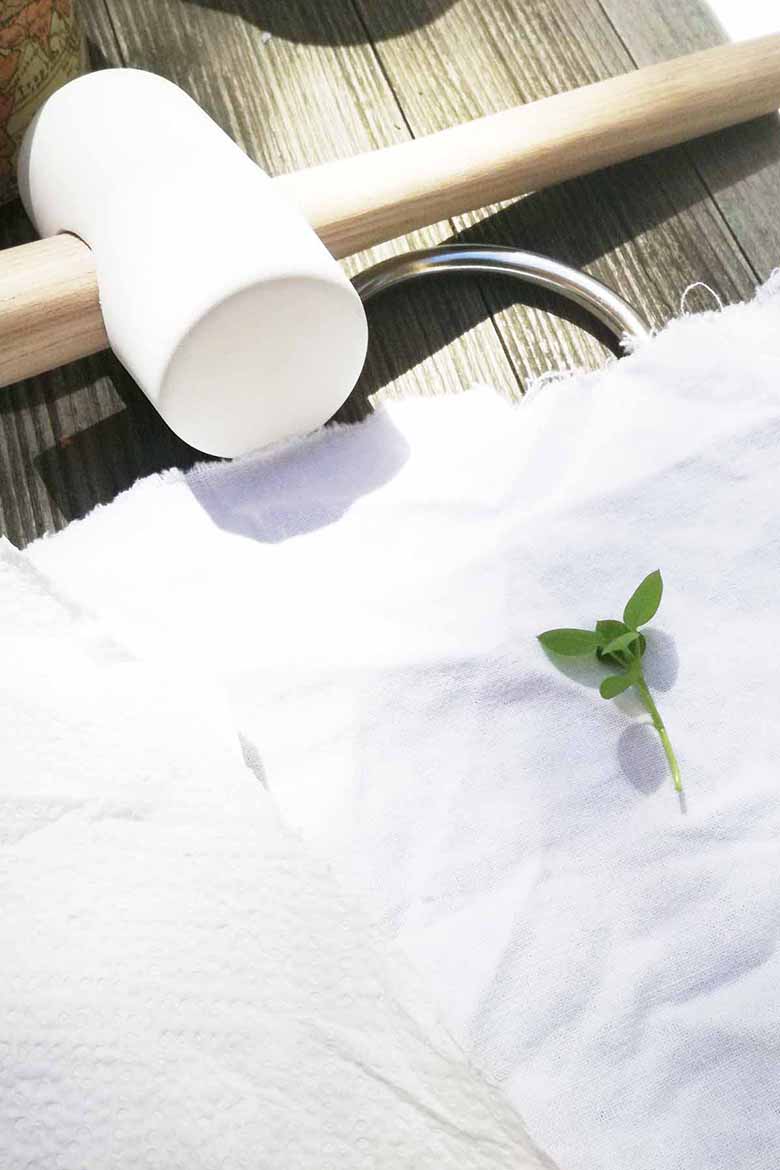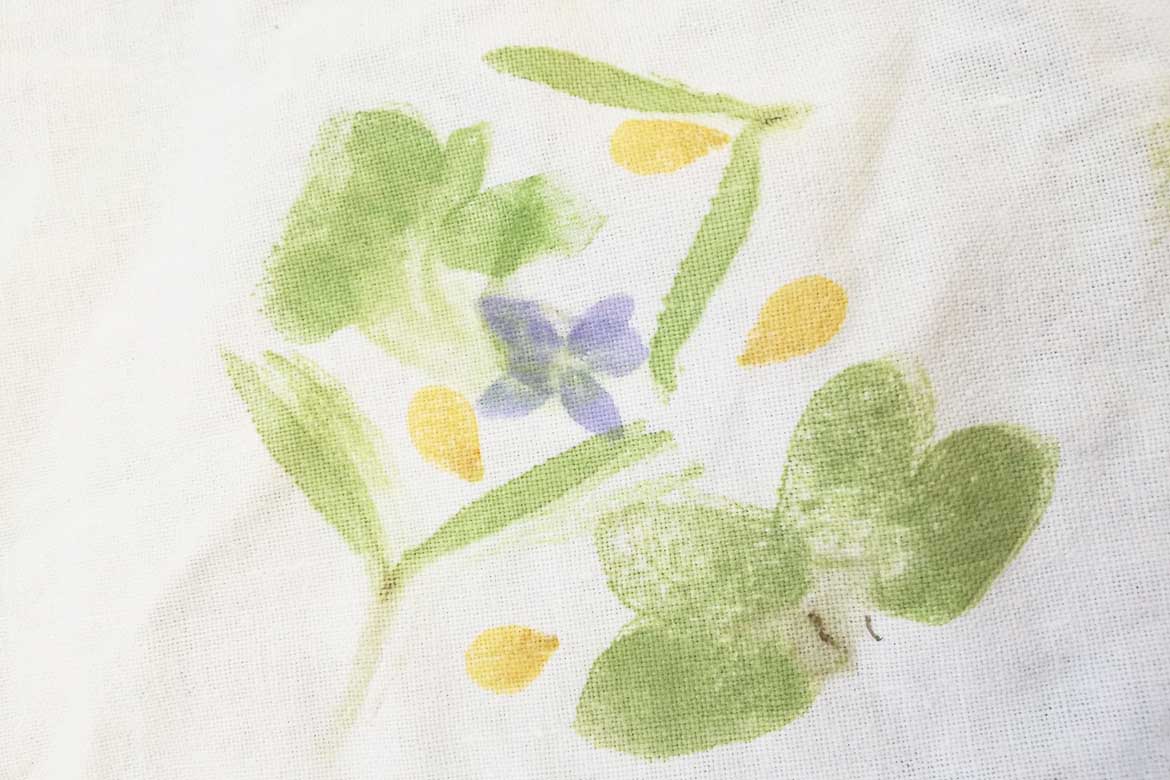Do you like plants? Do you want to learn a simple way of capturing their shape and color on fabric or paper? Do you also want to work out some anger issues? Then try tataki zome – or leaf pounding – and smash some poor flowers with a hammer!
What? Yes! Plants are trending, whether we‘re doing urban gardening or wearing flower prints, whether we‘re filling our apartments with succulents or collecting wild plants to cook with. Since humans have first started creating art, they‘ve observed and used what was around them. Small wonder then, that the technique of printing the shape and color of leaves and blossoms directly on fabrics by simply hammering them into the cloth has been used in different parts of the world at different times.
Old origins, new developments

The Cherokee and other Native American tribes used to decorate their tents and leather goods with this technique and you can see how it has been developed further if you look for Bettye Kimbrell‘s Cherokee quilts, where leaves are hammered onto pieces of fabric, which are then sewn into beautiful botanical quilts.
In Japan, the technique is called tataki zome – hammer dyeing, although it seems to be done on washi paper and with a bit more delicacy, using smaller pieces of rubber, rather than a hammer. But the name you‘ll find most frequently is probably hapa zome, leaf dyeing, a term coined by Australian textile artist and dyer India Flint in 2006. She has experimented with all kinds of ways of fixing natural dyes to fabric and if you can find it, read her book Eco Colour for techniques and inspiration.
Simple technique, simple equipment

But back to tataki zome or leaf pounding or hammering. It isn‘t hard, all you need is a plastic board, a piece of cloth or paper, a piece of cardboard or thick paper and a hammer. And some plants, of course. Start small. Use an old handkerchief or t-shirt or kitchen towel or some leftover cloth from your latest sewing project. It should be made of natural materials – cotton, linen, hemp or silk – and light-colored, but apart from that, it really doesn‘t matter what color it is. The more it has been washed, the better the colors will stick. If you don‘t have a wooden or rubber hammer, use a plastic board, because a normal hammer or a stone might leave dents in a wooden board. Take some thin cardboard or thicker paper from your paper trash and then go to a field, wood, park or garden to sit on the ground.
Be inspired by your surroundings

As you look at the plants and flowers around you, pick a few of the ones you like. Put the cloth on your board and the board on the ground or your leg, arrange the plant how you want it to look, put the cardboard over it and hit it with the hammer. Hard. Hard enough to transfer the pigments from the leaves or blossoms onto the cloth. It works best when the plants are fresh and full of water, so pick them and then use them right away, if possible. While autumn leaves do make beautiful prints, gather the freshest you can find, otherwise you might not get a good print. The same goes for very durable, dry plants like papyrus, reeds or tough grasses. And don‘t get the cloth wet while hammering, as the shape of the leaves or blossoms will immediately blur – unless you want to experiment with that.
To make the plant prints last longer, you could treat your fabric with alum or vinegar and salt or try covering the print with fabric medium. However, unless you use actual dye plants that contain longer-lasting pigments like indigo, mallows or marigolds, the prints will fade, so if you want to decorate clothes, pick something you won‘t wash very often, don‘t expose it to too much sunlight, and only wash it by hand. Or you can see it as a feature and hammer some new leaves onto the fabric when the old ones start to fade.
Make it your own

There really is almost no limit to experimenting with this technique. Use whatever is left from making dinner or from a fading bouquet, from weeding your flower pots, from taking a walk. Create pictures. Don‘t create pictures. Create herbaria. Create fantastic plants never seen in nature. Play with colors and shapes. If you fold the cloth over the plant part, you can create mirror images. If you add water while or after hammering, you can blur the shape. Embroider the outlines or add more details with fabric pens. Hit the plants more gently to get more details or go forth and smash!


